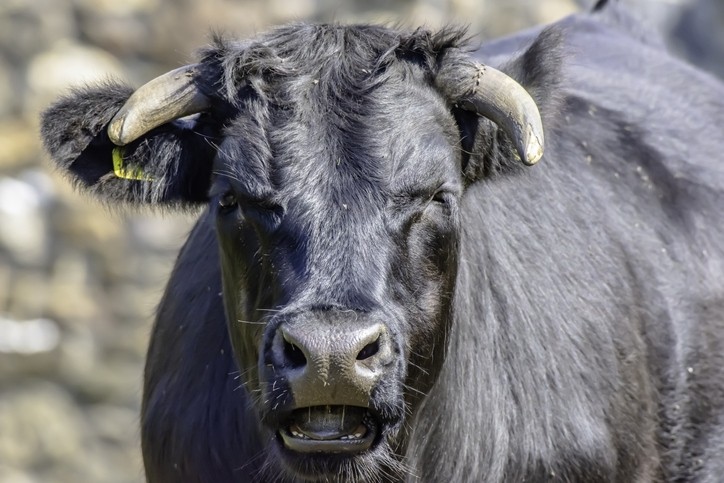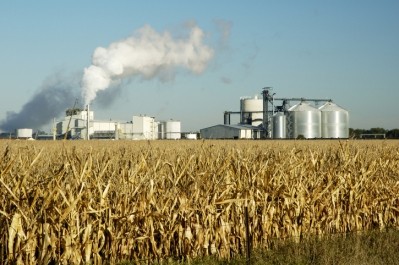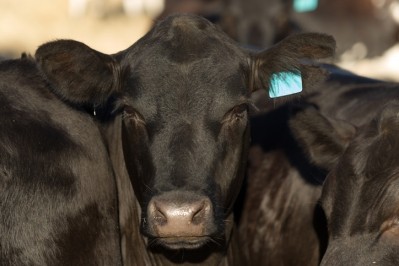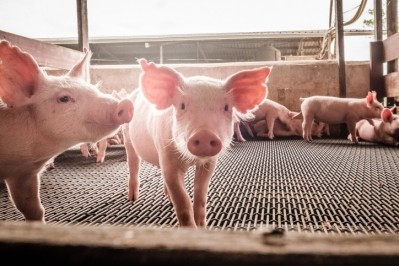Distillers grain receives passing grade for use in bull feed

A team of researchers from the University of Illinois explored the use of low-sulfur, modified wet distillers grains with solubles (MWDGS) in the diets of developing bulls and the influence of the feed ingredient on animal development and fertility. The study was published in the journal Translational Animal Science.
Interest in evaluating the use of the feed ingredient started with questions from producers about use of the by-product along with negative results found during a study exploring the use of distillers grains in the diets of male sheep, said Daniel Shike, corresponding author with the department of animal sciences at the University of Illinois Champagne-Urbana. There has also been less research done with breeding bulls.
“Distillers grains have been included in cattle diets for some time, and they’ve really been included in a variety of classes of cattle – most commonly in feedlot or finishing diets, but they’ve been used to supplement the cow herd, and they’ve been used with developing heifer projects, and there have been bulls that are fed distillers – but there’s never been research on distiller grain inclusion in bull diets,” he told FeedNavigator.
The research team’s hypothesis for the feeding trial was that there would be problems, he said.
The diet was predicted to negatively influence “semen motility, morphology and concentration” at the end of the feeding trial, the researchers said. However, bull body composition, hoof development, and growth performance were not expected to be altered.
On day 00 of the study there was an issue with increased proximal droplets found in semen, said Shike. However, that disappeared by the end of the feeding study.
“I think that really had as much to do with time and age as it did with condition,” he said. “Both groups had some increases in the proximal droplets early on and it got better with time and that’s absolutely what you would expect … with young bulls but when they get to working-age it’s less of an issue – so it wasn’t a surprise that we didn’t have any issues when we got to the end of the experiment.”
More research is needed to further explore the topic as this is only the initial study, he said. “If funding was available the next step would be to look at distillers grains with a higher sulfur content,” he added.
The intention at this time is to continue using distillers grains in feeds for developing bulls although the sulfur level of the feed ingredient can dictate how much is included in a feed, he said. However, the amount used in diets is typically lower than what was used in the study.
“Most of the time it comes down to a cost decision, and as long as it prices in, which most often it does, we’ll continue to include distillers,” Shike said.
The project was partially supported by the Illinois Beef Association.
Why focus on distillers’ grains?
Nutrition and reproduction are two of the most important factors for financial success at a cow-calf production facility, the researchers said. Reproductive challenges – including the fertility of the herd bull – and disease are thought to cost cattle producers up to $502m annually.
Bulls are commonly developed on “grain-based, high-energy diets” before they are sold, they said. Although distillers grains are used in diets because they are relatively inexpensive, the ingredient has a high level of fat and maybe high in sulfur.
A study done with rams found a linear drop in spermatozoa concentration in rams as the level of dried distillers grains with solubles (DDGS) were included in the diet, they said. A second study using higher levels of the ingredient noted reduced scrotal circumference along with higher spermatozoa concentration and normal sperm.
The inconsistent results raise questions regarding if distillers grains should be used in feeds for breeding bulls, they said. “Therefore, the objectives of this study were to evaluate the effects of offering growing bulls a diet with 40% modified wet distillers grains plus solubles (MWDGS; DM basis) on body weight (BW), body condition score (BCS), hip height (HH), ultrasound (rump fat depth [RF], 12th rib fat thickness [BF], marbling score [MS], and longissimus muscle depth [MD]), hoof evaluations, reproductive measures, percentage of bulls that were pubertal, percentage of bulls with a satisfactory breeding soundness examination (BSE), and semen motility, morphology, and concentration,” they added.
Feeding trial details
In the feeding trial 26 bulls received one of two diets for a 140-day period, the researchers said. Following the period with experimental diets, all bulls were transitioned to a low-energy ration for 70 days.
The diets included a corn-based control diet with no distillers grains or a diet with 40% modified wet distillers grains with solubles (MWDGS), they said.
When young bulls are being developed for sale they are often raised on a higher energy diet, said Shike. “It really stems back to the days when there was more of the centralized performance tests to see whose bulls would gain the most weight and be most impressive while they were on test.”
Although there is research that suggests bulls can be raised on a lower nutritional plain, many producers still provide higher energy diets before sale, he said. It is a common practice to transition them to a diet with a lower level of energy to bring them down to working condition if they have become slightly over-conditioned.
Bodyweight was measured at the start of the feeding trial and on days 28, 56, 84, 112, 139, 140, 175 and 210 and individual feed intake was recorded, the researchers said. HH, RF, BF, MS, MD and BSE were assessed on days 0, 28, 56, 84, 112, 140, 175 and 210.
Hooves were assessed using a foot scoring system, they said. Semen samples were collected for analysis on days 0, 28, 56, 84, 112, 140, 175 and 210.
Results
Overall, bulls on the distillers diet had increased body weight on days 28 and 56 and higher rump fat (RF) on day 84 along with increases in backfat (BF) and major sperm defects on day 140 of the feeding trial, the researchers said. However, following the 70-day period on the low-energy diet, there were no “carryover effects” for reproductive measures, growth, composition or foot quality other than a trend toward BF.
Bulls receiving the diet with distillers grains tended to be heavier on days 28 and 56 but there was not a change in body condition score (BCS) or HH, they said. However, bull BW and HH increased throughout the study while BCS improved through day 140 then declined through day 210.
There were no treatment effects found for average daily gain, dry matter intake or gain:feed, they said. However, there was a treatment and time effect for RM – bulls on the distillers diet had higher RF on day 84 – and BF as bulls receiving the distiller feed saw higher BF on days 84, 112 and 175.
On day 140, bulls receiving the distillers diet had a higher percentage of major sperm defects than those on the control feed, the researchers said. “A time effect was detected for percentage of sperm with normal morphology, percentage of minor sperm defects, percentage of major sperm defects, and percentage of sperm with proximal droplets; percentage of sperm with normal morphology increased over time, whereas percentage of minor sperm defects, percentage of major sperm defects, and percentage of sperm with proximal droplets decreased over time,” they added.
Diets were also not linked to changes in foot angle or claw set, they said.
Source: Translational Animal Science
Title: Influence of distillers grains with solubles on bull growth and reproductive traits
Authors: P.A. Henley, G. Podico, E. Garrett, C. Kaplan, W.T. Meteer, J.C. McCann, I. Canisso, D.W. Shike
DOI: doi.org/10.1093/tas/txz189













